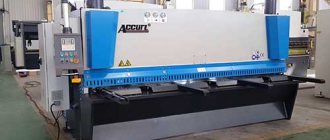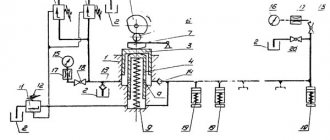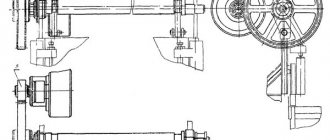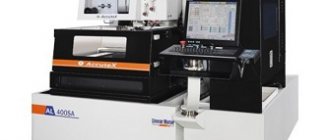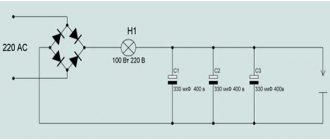Cutting sheet material is an important technological operation, which is necessary when creating a significant number of profiles. In order to quickly and efficiently cope with the task under consideration, special equipment is required - a metal guillotine. You can buy this machine on the Metal Master website. The information presented here is a photo, video, detailed description, technical. The characteristics of each machine model will allow you to make a balanced and deliberate decision, to select the optimal equipment option that fully corresponds to the technological realities of your enterprise. When it’s difficult to make the right choice on your own, you can simply call the number listed on the website. Consultation with an experienced manager will help you choose the best equipment option.
The offered guillotine shears fully comply with European standards. Equipment must be tested in various operating modes before the machine goes on sale. Therefore, you can be 100% confident in the excellent quality of this equipment.
Convenient cutting of a wide range of materials: sheet steel, copper, zinc, brass, plastic. As a result, the output is workpieces of ideal quality without any defects (no dents, burrs, etc.). Depending on the modification of the equipment, it is possible to cut both rolled and sheet material.
Even work associated with a significant operational load will be done as quickly and efficiently as possible. Due to the high speed of completing assigned tasks, production efficiency invariably increases. The cost of finished products is reduced, and the enterprise becomes more profitable. The machine fully pays for itself within a few months, when the equipment is fully loaded.
Together with a reliable bending machine, guillotine shears allow you to perform tasks with the creation of additional roofing elements, elements of drainage and ventilation systems, as well as a significant number of other metal profiles. Guillotine for cutting metal is in demand in various fields of industry: construction, mechanical engineering, instrument making, manufacturing of advertising structures.
Before you start working with the machine, be sure to read the safety manual and also undergo a short briefing. With the task of those maintenance, the operator can easily handle it independently, without the help of a third-party specialist.
The choice of guillotine shears should depend not only on the workload of production (here the machine is selected based on the type of drive), but it is also important to take into account a number of technical characteristics: the thickness of the sheet material, the permissible length of the workpiece, weight and overall dimensions. Some parameters should be taken into account with a small margin. This approach will avoid overloading the equipment, which means the equipment will last much longer.
Manual guillotine saber type
This small-sized equipment has a relatively low weight - simple and convenient transportation of the machine from one production facility to another. The blades of the machine are made of alloy steel of the highest quality, resistant to corrosion.
The proposed technology represents the optimal solution for enterprises whose main field of activity is single or small-scale production. The machine can be installed in enterprises where production space is limited, for example in a small workshop or repair shop.
We invite you to pay attention to such equipment as Metal Master: MG 800; MG 500; MG 1000 (HS 1000); MG 1300.
Best purchasing conditions
offers the best conditions for customer service and sells various products for high-quality metalworking. We have the best guillotine prices and a wide range of options. The goods are always in stock at the company's warehouse, so you can buy guillotine equipment at low prices in the shortest possible time.
The entire range of products is presented in the catalog, there are also photos and descriptions, which allows you to buy the product at the best price-quality ratio. At any time, X-Profil employees are ready to answer all questions that clients may have regarding the purchase of guillotine machines .
Design features and advantages:
- The presence of a spring compensator allows for ease of lifting. Significant savings in worker effort, which generally has a positive effect on the efficiency of your enterprise.
- Increased wear resistance. The resulting vibration effect does not have a significant impact on the accuracy of solving the assigned tasks;
- Excellent stability. At the base of the guillotine shears there are special holes for attaching the equipment to the working surface using anchor bolts. During the process of cutting the material, the machine is not allowed to move;
- Possibility of processing sheet metal of unlimited length. There is a special method for attaching the blade (cantilever);
- Comfortable handle of the machine. The tip of the handle is made of non-slip material;
- It only takes a few minutes to set up the equipment to work with the required metal thickness;
- The machine is quite easy to use. Even a person who does not have significant experience working with similar equipment can understand the principle of its operation.
Electromechanical guillotine
Reliable stationary equipment, which, depending on the machine model, allows you to process sheet metal with a thickness of 1.5 mm to 6 mm. Even complex tasks associated with a serious load will be solved as quickly and efficiently as possible, which becomes possible thanks to a powerful electric motor. The powerful body of the guillotine shears with an electromechanical drive makes the machine resistant to the negative effects of production vibrations. The cutting accuracy will always be at a fairly high level.
We offer you to make the necessary choice from a significant number of metalworking equipment, Metal Master: ETG 1330; ETG 2540; ETG 1315E; ETG 1530E; ETG 2030E.
- Schematic diagram of the structure and operation of a guillotine (frame, table, knives, drive, electrics, control panel, back stop) Classification of guillotines by drive.
- Manual guillotines. Saber guillotines. Leg guillotines. MG, MTG, MZG, HT. Features of the work.
- Options for hydraulic guillotines (swim beam and direct action) features of direct action guillotines. Sheet positioning devices, pneumatic support. Control options, CNC, DRO, what parameters are controlled.
- Brief information about the manufacturing plants of MetalMaster guillotines (name, number of personnel, country of location)
- Basic equipment of HCJ and HCN guillotines, options.
- Guillotines analogues (Yawei, Yangli, Durma, Ermak, Baykal) and importing companies
- Variants of electromechanical guillotines (flywheel and gear) features of gear-action guillotines. Sheet positioning devices, pneumatic support. Control options.
- Basic configuration of guillotines MSJ, ETG, GM, MT, SMT, MSB, MSC, options.
- Guillotines analogs (Durma, NG, Transtech, SBKJ) and importing companies
Guillotines for cutting metal are machines that cut sheet metal using an inclined knife.
For cutting, guillotines are used, which develop a force sufficient for the selected thickness of the material, determined by the drive parameters and the rigidity of the structure. A high-quality cut requires precise placement of the sheet in the guillotine, setting the parameters of the working parts and using a tool suitable for the given material.
- Guillotine frame.
During the cutting process, a force is applied to the workpiece, causing it to undergo elastic deformation, which turns into plastic deformation and ends with separation of the sheet. The applied forces are perceived by the guillotine frame and should not lead to its deformation. The rigidity of the frame is ensured by its material and design. The thicker and stronger the material you have to cut, the more force you need to apply, the more massive the frame must be and the greater the demands placed on the material from which it is made. In most cases, frames are welded from structural steel. After machining, stress is removed from the frame by thermal or vibration methods.
The frame determines the stability and accuracy of the guillotine.
- Movement of the blade beam (guillotine knife).
According to the methods of blade movement, we can distinguish direct-acting guillotines and guillotines with a swinging (rotating) beam - “swing beam”. Direct action guillotines require a straight vertical movement of the knife. A similar device is used on all types of machines. The use of this scheme makes it possible to apply significant forces required for cutting sheets of large thickness, and also makes it possible to change the main angle of the guillotine on hydraulic guillotines.
The ability to change the main angle creates an additional opportunity to improve the quality of cutting when cutting material of varying thickness and strength.
The “swing beam” system involves the movement of the knife in an arc around a rotating center. This movement option allows you to reduce the price of the guillotine, but at the same time you lose the ability to control the main angle of the guillotine.
| "Swing beam" | direct action |
- Placing the sheet in the guillotine.
For more convenient and accurate placement of the sheet in the guillotine, manual or electromechanical back stops .
The movement of the stop is carried out along a rack, ball screw, or simply along a guide, manually.
For precise positioning of the sheet, a ruler can be installed on the guides, or a digital indicator of the position of the stops is displayed on the control panel, or the position of the stop is set by the CNC.
The emphasis is mounted on a movable beam and moves together with it.
- Pneumatic sheet support device
To prevent sheet deformation when cutting large sizes and associated cut defects, some guillotine models are equipped with a pneumatic sheet support device.
Depending on the design, pneumatic support can be provided during sheet placement, or during sheet placement and cutting.
In some cases, the sheet support device is mounted on a movable beam.
The supports are equipped with rulers and reversible front stops , which can be moved along the support along the groove. On one side the guillotine has a side stop for feeding the sheet at an angle of 90 degrees. The supports can be movable and, in this case, they can be moved towards each other and used for cutting the strip.
Ball tables make it easier to place heavy sheets on the guillotine table.
In some cases, the guillotine is equipped with a device for placement at an arbitrary angle . To cut sheets according to preliminary markings, light markers - the cutting line is marked on the workpiece with a laser or a shadow cast by a stretched string.
To prevent the workpiece from shifting, at the beginning of the cycle, before cutting, the sheet is fixed to the table with clamps. The clamps are covered with polymer tips that prevent damage to the material. The ejection of the workpiece can be carried out either from the back of the guillotine or forward.
The direction of ejection is determined by the design of the guillotine. The ejection direction is selected based on where it is planned to place the guillotine in the workshop in the technological chain.
The guillotine jaw is used when it is necessary to cut a sheet exceeding the width of the guillotine. In this case, cutting is carried out in several stages. The operation requires a controlled cutting length. The depth of the throat determines the maximum possible width of the cut part.
Types of guillotine drives for metal cutting
- Manual guillotines are driven by the muscular force of the worker. Force compensation is performed by springs (conventional or pneumatic).
- Electromechanical guillotines can be divided into flywheel and gear type. Flywheel (rotor) guillotines store kinetic energy in a constantly rotating flywheel and transfer it through an eccentric mechanism to a moving beam at the moment of making a cut.
Geared guillotines turn on the engine only at the moment of making a cut, there are no flywheels, the force is developed through the gearbox transmission system. Geared guillotines are less noisy, more economical, durable and stable in operation and compact.
- Hydraulic guillotines transmit force to a moving beam through hydraulic cylinders, converting electrical energy into oil movement through the hydraulic system. For hydraulic guillotines, the type of beam movement is especially relevant - straight or rotary.
Selection of knives for guillotine:
Guillotine knives are made from tool, high-speed alloy steel 6ХС, 9ХС, 6ХВ2С, etc.
The dimensions of the knives depend on the thickness and material of the sheet and range from 12x50 to 120x220mm.
Long knives are assembled from segments from 110 to 2000 mm. Cutting stainless steel requires special knives.
The dimensions of knives for Russian guillotines are determined according to GOST 25306-82. Knives can be sharpened from one to four edges.
Guillotines designed for cutting sheets larger than two millimeters are usually equipped with a device for adjusting the gap between the knives. The gap between the knives is set depending on the thickness of the workpiece.
The main angle of the guillotine (the angle of inclination of the upper blade) in most models designed for cutting steel up to 4 mm is fixed. For direct-acting hydraulic guillotines, the main angle can be changed within a specified range of values.
This allows you to more finely tune the guillotine to work with material of different thicknesses and make a better cut.
Guillotine control system
- Manual control
With manual control, the operator manually sets the sheet feed stops, the gap between the blades (if this option is present), places the workpiece and cuts the metal. Hydraulic, electromechanical and manual guillotines can be supplied in manual versions. Motorized guillotines require a setup mode, automatic cutting and single cut.
- DRO - digital display device
Hydraulic and electromechanical guillotines are equipped with the DRO system. When controlled with a DRO, the back stops are motorized and are moved from the control panel.
The actual position of the stops is displayed on the DRO screen and, if fine adjustment is necessary, the stops are adjusted manually.
The DRO also counts the number of cuts. The gap between the knives, the placement of the workpiece, and the launch of the guillotine are carried out manually by the operator.
CNCs can be digital or graphical. Depending on the complexity, the CNC controls a different set of guillotine adjustments: the position of the back stops and the number of cuts, the gap between the blades, the main angle, the workpiece clamping force, pneumatic clamp control and
workpiece ejection option. In simpler CNCs, the values of each parameter are set manually; more complex controllers allow you to automatically select the value of the gap between the blades, the main angle and the clamping force, depending on the specified sheet thickness and the selected workpiece material.
To select a guillotine, you need to clarify the following questions:
- Material and thickness of the workpiece - the main parameters of the guillotine - frame, drive and tool - will depend on them.
- The range of processed thicknesses - the need to supply a guillotine with a variable angle and convenient gap adjustment depends on this
- Length and width of maximum cut piece - larger sizes will require air support
- Where will the workpiece be ejected?
- Which control option is preferable to the client - the more heterogeneous and different-thickness material is planned to be cut - the more preferable is the option with an expensive CNC.
Review of guillotines in the assortment of Listogib LLC
- Manual guillotines
They are characterized by a small maximum thickness of the processed sheet (0.8-1.5 mm), the movement of the beam along vertical guides, and the inability to reconfigure the gap and the main angle of the blade.
MetalMaster MG – saber guillotine for thin plastic, cardboard, tin. It does not have a workpiece clamping device and cannot be used for precise cuts. Beam lifting with spring compensation. It is small in size and weight. Despite the stated maximum thickness of 1.5 mm steel, it confidently cuts sheets up to 0.7 mm. The cheapest option. .
MetalMaster MZG – compact Polish guillotines for cutting sheet metal on construction sites. The frame is lightweight for increased mobility. The beam moves along vertical guides under the influence of its own weight, after being removed from the stopper. The worker makes efforts to lift the beam to its original position. To place the sheet, primitive back stops without a ruler and a side stop for cutting at right angles are used. Before lowering the beam, the workpiece must be pressed down (a separate operation). MZG should be offered in cases where it is necessary to frequently move the guillotine using improvised means and for work on construction sites.
MetalMaster MTG, Mazanek GR, Schechtl HT are stationary guillotines of a similar design. The beam is lowered by the worker by turning the handle connected to the eccentric. The return of the beam to its original position is compensated by a spring. During one movement, the workpiece is first pressed, then cut. To facilitate workpiece placement, guillotines are equipped with stepless back stops with rulers (500 mm for GR and HT, 350 mm for MTG), table rulers, side stops, and retractable telescopic stops. HT can optionally be equipped with knives for cutting stainless steel, a device for placing sheets at an angle, and a stop of 750 mm). Guillotines differ from each other in price and resource, respectively, German-Polish-Chinese.
MetalMaster MTG 1315 differs in design from other guillotines of the MTG series in that it has a foot drive, a back stop device (840 mm) represented by a rod that moves manually without a flywheel, front support rods with stops in the T-shaped groove, and an angled sheet feeder included in the kit . Designed for cutting sheets from a 1250 mm roll mounted on an unwinder.
- Electromechanical guillotines
MetalMaster ETG – rotor type, motorized version of MTG 1315
Mazanek GM, Schechtl SMT, Schechtl MSB – gear-type guillotines. In one cycle, the sheet is clamped with a spring-loaded beam and cut. In the basic version, they are supplied with a manual sheet feed limiter of 500 mm. Table with markings, telescopic extendable support table.
For SMT and MSB, the following options are available: BV/BVH (pneumatic support, manual back stop 750 mm with front control, ejection of the workpiece forward/backward) and NC/NCH (motorized stop 750 mm, pneumatic support, CNC for 99 programs of 6 steps with a cut counter, ejection of the workpiece forward/backward). The main angle and gap are not adjustable. Schechtl guillotines can optionally be equipped with knives for cutting stainless steel, a device for placing the sheet at an angle, a shadow cutting line, a mechanical cut counter, and a digital display for the position of the back stops.
Schechtl MSC - gear type. Available in BV/BVH (pneumatic support, manual back stop 750 mm with front control, workpiece ejection forward/backward) and NC/NCH (motorized stop 750 mm, pneumatic support, CNC for 99 programs of 6 steps with a cut counter, forward ejection of the workpiece) /back). The placement of the sheet is facilitated by movable support rods with a ruler and T-shaped grooves and reversible stops, a side stop).
The main angle and gap are not adjustable. Optionally they can be equipped with knives for cutting stainless steel, a device for placing the sheet at an angle, a shadow cutting line, a mechanical cut counter, an indicator for the position of the back stops, and ball bearings.
MetalMaster MSJ – gear type. Stress relief from the frame is carried out by thermal annealing. Placing the sheet is facilitated by a motorized stop with an Estun E10 digital readout or a 650 mm manual stop, front supports with rulers, T-slots and flip stops, and a side stop. The MSJ guillotine allows you to adjust the gap between the blades. The guillotine uses Siemens electrics.
- Hydraulic guillotines:
MetalMaster HCJ, MetalMaster SB – guillotines with Swing beam.
The beam is lowered by hydraulic cylinders, and the beam is returned to its original position by nitrogen cylinders.
The frame is welded from solid rolled structural steel. After welding the frame, stress relief from the frame is carried out by thermal annealing followed by machining.
The guillotine is equipped with a motorized back stop, front support bars with T-shaped slots and reversible sheet feed limiters, a side stop, ball bearings, and a shadow cutting line. Sheet clamping is hydraulic, with a section for cutting narrow strips.
The hydraulic system consists of a pump, oil lines, hydraulic cylinders (China), NOK seals (Japan) and a distribution valve - Rexroth (Germany). Electrics Siemens (Germany) or Schnider (France). Manual adjustment of the gap between the blades.
DRO control Estun E10 (subsidiary of Delem - the Netherlands) or CNC Estun E200 (memorizes programs from the number of steps in each of which you can set the number of cuts and the position of the back stop). Photoelectric protection of the rear part of the guillotine.
MetalMaster HCN – guillotines with vertical beam stroke and variable main angle.
- Raising and lowering of the beam is carried out hydraulically.
- The frame is welded from structural steel.
- Steel undergoes natural aging under environmental conditions for at least one year.
- After machining and welding, the frame is annealed and the welds are additionally processed with a vibrating machine to relieve residual stresses.
- The guillotine is equipped with a motorized back stop (ball screw - Hiwin - Taiwan), front support bars with T-shaped slots and reversible sheet feed limiters, a side stop, ball bearings, and a shadow cutting line.
- Sheet clamping is hydraulic, with a section for cutting narrow strips. The hydraulic system consists of an Eckerle pump (Germany), a valve system - Hoerbiger (Germany), Turkish oil lines and hydraulic cylinders. Electrics Siemens (Germany) or ABB (Switzerland).
- Upper and lower blades with four-sided sharpening.
- Control of Cybelec Cybtouch-6 (Switzerland) in Russian.
- The CNC controls the number of cuts, rollback of the stops, selection of the gap and main angle depending on the material of the product, and the length of the cut.
- Laser protection of the rear zone of the guillotine.
Design features and advantages:
- Electromechanical drive with gearbox lubrication system. Low noise of the machine even under heavy load;
- Special desktop layout. Extremely precise positioning of the processed sheet material;
- High-precision adjustment of gaps between knives. A clean cutting surface is guaranteed;
- For convenient operation, the equipment is equipped with a foot drive. With free hands, the operator can easily and quickly place the metal sheet on the work surface;
- The machine is attached to the working surface using anchor bolts. During the process of cutting metal into workpieces of the required overall dimensions, equipment movement is not allowed;
- The occurrence of scratches on the surface of the processed material is excluded. The presence of polymer pads ensures accurate clamping of sheet metal;
- The equipment allows you to cut not only metal, but also cardboard and plastic;
- Reliable protection of the operator’s fingers eliminates the occurrence of force majeure circumstances.
Main types of guillotine shears
Sample of a German hydraulic guillotine
Industrial workshops, private and home workshops specializing in metalworking are equipped with various types of guillotine shears, which differ in:
- type of drive;
- power;
- type of knives;
- productivity;
- maximum thickness of the metal being cut;
- the range of rental products they can work with;
- size of the processed sheet;
- the number of operations performed.
According to the type of drive, scissors are divided into:
- manual;
- hydraulic;
- pneumatic;
- electromechanical.
Guillotine shears for metal work on the principle of influencing metal simultaneously with a large pressure force and a sharp edge of a knife, operating on the principle of ordinary scissors. The two parts of the knife device are displaced relative to each other. They clamp the sheet or rolled product together and move its adjacent layers, cutting it with a sharp blade.
The guillotine cutting process combines two operations - cutting and breaking.
A good guillotine for cutting industrial metal provides up to 90% of the cut and about 10% of scrap.
Cutting edge with small gap
Cutting edge at optimal clearance
Influence of the gap size on the edge
In this case, the cut is smooth and requires virtually no processing. If the knives are dull or the gap is incorrectly set, then the cut/scrap ratio changes and a sharp protrusion appears on the lower edge - a burr, which indicates poor cutting quality.
The burr can easily cut your hands, especially when working with stainless steel. One of the main safety rules when working with guillotine-type scissors is the use of gloves made of thick fabric or with leather stripes. The appearance of burrs indicates the need to change the settings or sharpen the knives.
Hydraulic guillotine shears
The rigidity of the guillotine design is ensured by a durable, welded frame. The resulting vibration load does not affect the accuracy of solving the assigned tasks. Availability of powerful hydraulic cylinders and a reliable hydraulic system with components supplied by the world's leading manufacturers.
The CNC has an intuitive control system. It is possible to record up to 40 programs. Excellent positioning, cut counters, and clamping time settings - all this can provide a significant increase in labor productivity.
We offer a significant selection of machines, Metal Master: HCJ 2060; HCJ 2540; HCJ 2560 and others.
Design features and advantages:
- Sufficiently powerful equipment intended for mass production. Low operating noise even in very busy conditions;
- The optimal ratio of favorable price and decent quality. For a long time, the machine will work as efficiently as possible, coping even with a significant load;
- Built-in pressure gauge and force regulator. Metal cutting will be carried out in strict accordance with established requirements;
- Ergonomics. Intuitive control panel. Wide choice of sizes and functions. Full compliance with almost any production requirements;
- Electrical equipment from Siemens and Schneider is characterized by increased performance and wear resistance;
- Sheet support brackets with an adjustable crossover stop are located on the front part of the machine. Thanks to the shadow cutting line, marking work can be done.
In general, the proposed technology is an excellent choice for mass production when a durable machine with significant functionality is required. This is a reliable assistant that makes your work much easier.
Practical use
Buying a guillotine and using the machine for processing rolled metal products is profitable and affordable. The cost of guillotine equipment for cutting metal is, in general, quite reasonable, and the efficiency of the installation is quite high, which makes such machines an effective solution for cutting metal.
The scope of use of various types of guillotine devices is practically unlimited. All production enterprises related to the processing of rolled metal, factories and specialized companies strive to buy a machine for cutting metal sheets at a favorable price and use it as needed.
The scope of application of the blanks ranges from the aviation industry and military-industrial complex to the automotive industry and the production of household items, so by purchasing this device at an attractive price you can expand your production.
